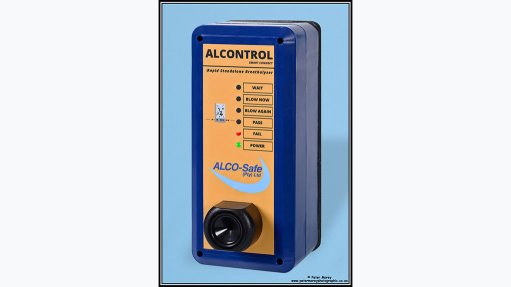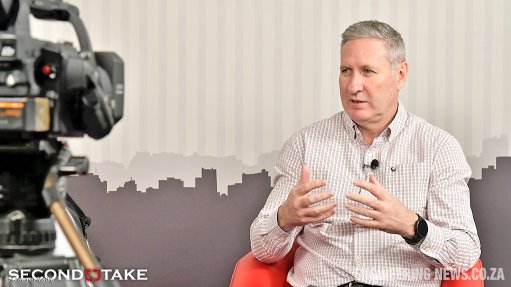Incremental mine development key for gold sector


GROWTH The steady gold price has been a bright light in an otherwise deflated commodities market
Photo by Bloomberg
In the face of global capital constraints, gold mining companies have been forced to look into alternative options for the development of mines. The gold mining industry is known traditionally for larger-sized operations that require the establishment of a large reserve base, as well as large capital outlays. Partnered with an increasing gold price, currently around $1 200/oz, mining industry consulting firm The MSA Group expects rising interest in the small-scale mining model to generate early cash flow.
Faster cash flow and return on investment for investors have become priorities for prospective mine developers, who have adopted new models for exploration and the development of gold mines, says the company.
“The gold mining industry has changed in the last few years. The way one explores and starts up a mining operation today is quite different to how it was done in the past. In light of that, we need to change the way we build our exploration programmes, the way we build our resource models and the way we set up our mining operations from scratch,” notes The MSA Group mine optimisation and planning principal consultant Richard Gawthorpe.
According to Gawthorpe, mines have refrained from developing an exploration campaign on the whole orebody, instead shifting focus to developing a mine in increments, ensuring capital expenditure is broken down and short-term milestones are set.
“What we have noted is that mining companies prefer to set shorter life-of-mine (LoM) projections, allowing quicker payback periods. “This, subsequently, allows them to pay off outstanding debt and to generate early profit from the operation as production is started sooner. Once mines have completed their payback period, cash flow becomes profit,” Gawthorpe explains.
He adds that mines in the past had investors with more capital, allowing them to explore and conduct large-scale operations. However, owing to the current financial market, mines concentrate on achieving production as soon as possible, providing investors with proof that the operation is indeed successful.
“A certain amount of exploration is necessary to understand the circumstances of the material and the rough volume and grade of the resource. “Current financial times have seen investor confidence stimulated by an existing ‘hole in the ground’ with a proven record. “Looking for funding for a greenfield project will lead to concern, as investors have little proof as to the likelihood of success of a future operation.”
Gawthorpe explains that the newer model, while having a short LoM at first, still has room for the extension of the mine’s life after the initial payback period.
“As a short-term mine is developed on shallow near-surface resources, it is cheaper and quicker to explore, while the softer surface material makes mining a lot cheaper. Once a mine has developed its resource to the level where it creates investor confidence, the smaller mining operation can expand substantially, using profits to extend the plant or upgrade equipment.
“By breaking the capital expenditure into smaller amounts, we make it more appetising for investors,” says Gawthorpe.
Risks and Developments in Africa
According to The MSA Group principal consultant Mike Robertson, the incremental mining model has become especially important for mines opening in regions, such as West Africa, where deep weathering and oxidation have resulted in the development of shallow oxide gold resources, that are amenable to easy openpit mining and processing, such as gravity concentration and heap leaching.
“The lead time from discovery to production in the gold sector has seen an average increase from 8 to 11 to 18 years over the last 30 years. With lead time continually increasing and the value of the investment locked up in the lead time, there needs to be a change of thinking because the economic environment changes so quickly,” he explains.
Robertson adds that, within an 18-year period, mining operations will experience a full cycle where prices peak and dip, making it difficult to determine when return on investment will be achieved.
Further, Gawthorpe notes that the ever-changing political climate in Africa remains a risk for long-term investments in greenfield mining operations, adding that longer payback periods are at risk as governments change every four to five years.
“The full resources model, in which a full-scale mining operation is developed, can maintain 25 to 30 years of operation, needing a 10- to 15-year stream of material to pay off debt, making the operation especially vulnerable to economic risks,” he states.
By adopting this incremental mine development model, the gold sector is able to break capital investment up into more palatable amounts which better suit the economic environment the industry finds itself in, allowing for more new operations to start.
Article Enquiry
Email Article
Save Article
Feedback
To advertise email advertising@creamermedia.co.za or click here
Comments
Announcements
What's On
Subscribe to improve your user experience...
Option 1 (equivalent of R125 a month):
Receive a weekly copy of Creamer Media's Engineering News & Mining Weekly magazine
(print copy for those in South Africa and e-magazine for those outside of South Africa)
Receive daily email newsletters
Access to full search results
Access archive of magazine back copies
Access to Projects in Progress
Access to ONE Research Report of your choice in PDF format
Option 2 (equivalent of R375 a month):
All benefits from Option 1
PLUS
Access to Creamer Media's Research Channel Africa for ALL Research Reports, in PDF format, on various industrial and mining sectors
including Electricity; Water; Energy Transition; Hydrogen; Roads, Rail and Ports; Coal; Gold; Platinum; Battery Metals; etc.
Already a subscriber?
Forgotten your password?
Receive weekly copy of Creamer Media's Engineering News & Mining Weekly magazine (print copy for those in South Africa and e-magazine for those outside of South Africa)
➕
Recieve daily email newsletters
➕
Access to full search results
➕
Access archive of magazine back copies
➕
Access to Projects in Progress
➕
Access to ONE Research Report of your choice in PDF format
RESEARCH CHANNEL AFRICA
R4500 (equivalent of R375 a month)
SUBSCRIBEAll benefits from Option 1
➕
Access to Creamer Media's Research Channel Africa for ALL Research Reports on various industrial and mining sectors, in PDF format, including on:
Electricity
➕
Water
➕
Energy Transition
➕
Hydrogen
➕
Roads, Rail and Ports
➕
Coal
➕
Gold
➕
Platinum
➕
Battery Metals
➕
etc.
Receive all benefits from Option 1 or Option 2 delivered to numerous people at your company
➕
Multiple User names and Passwords for simultaneous log-ins
➕
Intranet integration access to all in your organisation


















